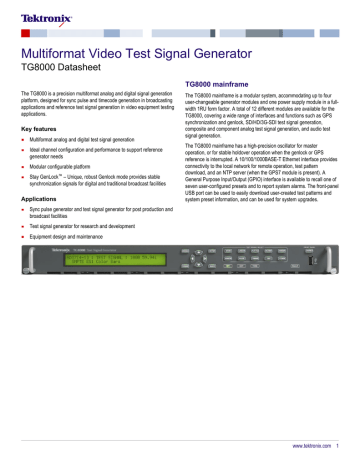
The panel is marked 0dBu at the 12 o’clock position, but I found it actually delivered about -8dBu there, and 0dBu was achieved with the trimmer just past two o’clock. It’s not a pure sine wave but adequate as a line-checking signal, and the output level is adjustable, via another screwdriver trimmer, between -30 and +8 dBu.
Xlr test tone generator generator#
If the Receive unit is switched to Test Tone, a crude sinusoidal signal generator outputs a (roughly) 1kHz tone as a balanced signal (hot on lines 2 and 4, cold on line 3, ground on line 1). A secondary function is also activated in this mode: when testing a cable connected between the Send and Receive units the beeper sounds each time the test sequence passes through Line 1. The continuity tester mode connects the internal 9V battery to the two 4mm banana terminals via a ‘beeper’ and another red LED. If the connections in the cable are crossed, the green LEDs on the Receive unit light in a different order from the yellow lights on the Send unit. So, testing a properly wired mic cable, for example, causes the LEDs for lines 1, 2 and 3 to light, one after the other, followed by a period with no lights (while the other five unconnected lines are checked), and then the 1, 2, 3 sequence repeats.

Assuming no LEDs light up during this first stage, the other end of the cable can be plugged into the Receive unit, and the LEDs on both units should illuminate together in sequence, indicating which Send terminals are connected to which Receive terminals. When a cable is plugged into one of the sockets on the Send unit, any short circuits are identified by two or more of the yellow LEDs lighting in sequence as the voltage is routed around the terminals - the lit LEDs indicate which terminals are shorted together. The Send unit’s test voltage (around 7V DC) is sufficient to power the Receive unit’s LEDs directly, so although the Receive unit has a battery compartment, a battery’s not necessary for basic cable testing - though the Receive unit can also function as a continuity tester or test-tone generator, and a battery is required for these functions. The Send and Receive halves each feature a column of eight LEDs, and the speed at which the system cycles the test voltage around the eight lines is adjustable via a front-panel screw-driver trimmer, with the speed range extending between agonisingly slow and a stroboscopic blur! The ground terminal of each connector is Line 1. The Send unit routes a low DC voltage in a repeating cycle around each of eight testing lines, which are connected to the corresponding terminals in the connectors (eight lines are needed to cater for the RJ45 sockets). However, for testing installed cables, the two halves (Send and Receive) can be separated in mere seconds, so they can be placed in different rooms at each end of the cable under test. When testing loose cables, these stay on the base plate and the whole ensemble can be used as a conventional cable tester.

The CT3 actually comprises two separate steel boxes. The CT3 also has a pair of 4mm banana sockets and a set of test probes for continuity testing of fuses and other cable/connector types. The correspondingly numbered terminals of each connector are wired together, so cables with any compatible plugs on each end can be tested. It’s housed in a substantial box and sports a lot of connectors: XLRs in five-pin (for DMX lighting) and three-pin (audio) variants four-pole Speakons five-pin MIDI DINs RCA/phonos BNCs quarter-inch TRS jacks 3.5mm TRS mini-jacks RJ45 (for Ethernet cables) and RJ11, for telephone cables.

While dbx’s CT3 ‘Advanced Cable Tester’ allows for this, it’s intended also to make it easy to test installed cables, such as lines running between a control room and recording space. Most cable testers are designed to test loose cables like guitar or mic leads, where both ends can be brought to the test box.


 0 kommentar(er)
0 kommentar(er)
